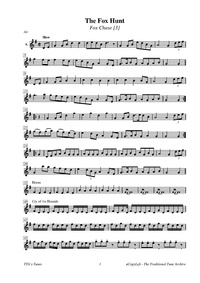Template:Pagina principale/Vetrina: Difference between revisions
No edit summary |
No edit summary |
||
| Line 1: | Line 1: | ||
{{SheetMusic | {{SheetMusic | ||
|f_track= | |f_track=The Fox Chase.mp3 | ||
|f_pdf= | |f_pdf=Fox Chase.pdf | ||
|f_artwork= | |f_artwork=Edmund_Keating_Hyland_plaque.jpg | ||
|f_tune_name= | |f_tune_name=The Fox Chase | ||
|f_track_title= | |f_track_title=Fox_Chase_(3)_(The) | ||
|f_section=abc | |f_section=abc | ||
|f_played_by=[https://soundcloud.com/ | |f_played_by=[https://soundcloud.com/mhichealoriabhaigh Mhícheál Ó Riabhaigh] | ||
|f_notes= | |f_notes=Keating Hyland plaque, Cahir | ||
|f_caption=The | |f_caption=The Fox Chase" is the tune by which every piper seems to have been judged, at least in the 19th century, when it was ubiquitous among pipers. | ||
|f_source=[https://soundcloud.com/ | |f_source=[https://soundcloud.com/mhichealoriabhaigh/the-fox-chase Soundcloud] | ||
|f_pix=420 | |f_pix=420 | ||
|f_picpix=200 | |f_picpix=200 | ||
|f_article=[[ | |f_article=[[Fox_Chase_(3)_(The) | '''The Fox Chase''']] | ||
A programatic piece replete with 'horns' and the 'cry of the hounds', 'death of the fox', and winds up with "[[Foxhunter's Jig (1) (The)]]." | |||
Some sections are variously in 3/4, 6/8 and 9/8 time. This "Fox Chase" was composed around 1799 by celebrated blind Co. Tipperary piper Edward Keating Hyland (1780-1845), who once received a set of expensive pipes from King George IV of England (who heard the piper while visiting Dublin in 1821) as a mark of recognition for his performance, according to Irish antiquarian Gratten Flood. | |||
The | It is the model for the Scottish "[[Hunting of the Fox (The)]]," but Hyland based his piece on an older (though short, eight-bar) song called "[[Maidrin Ruadh (An)]]" ([[Modhereen rua]]), which is based on a dialogue between a farmer and a fox which he had detected "with the goods" on him in the form of "a fine fat goose." | ||
The piper's piece concludes with the well-known slip jig "[[Foxhunter's Jig (1) (The)]]." Hyland's version, the first full version, appears in O'Farrell's '''Pocket Companion of the Irish or Union Pipes''' (vol. 1, book 2, c. 1806) {under the title "[[Irish Fox Hunt (The)]]"}. Hyland was no simple country piper, but an individual who studied harmony under Thomas Moore’s musical collaborator, Sir John Stevenson. | |||
O'Neill (1913) also prints two MS versions of the tune, one from Henry Hudson, c. 1841, and the other from Prof. P.H. Griffith of Dublin--the latter being a Tipperary version. Knowles (1995) finds parts of "The Fox Chase" in an anonymous 18th century English manuscript, in which it is entitled "Foxhunter Hornpipe (The)," and calls it "certainly the oldest known version" of the tune. | |||
The | |||
}} | }} | ||
Revision as of 17:00, 2 February 2024

Played by: Mhícheál Ó Riabhaigh
Source: Soundcloud
Image: Keating Hyland plaque, Cahir

A programatic piece replete with 'horns' and the 'cry of the hounds', 'death of the fox', and winds up with "Foxhunter's Jig (1) (The)."
Some sections are variously in 3/4, 6/8 and 9/8 time. This "Fox Chase" was composed around 1799 by celebrated blind Co. Tipperary piper Edward Keating Hyland (1780-1845), who once received a set of expensive pipes from King George IV of England (who heard the piper while visiting Dublin in 1821) as a mark of recognition for his performance, according to Irish antiquarian Gratten Flood.
It is the model for the Scottish "Hunting of the Fox (The)," but Hyland based his piece on an older (though short, eight-bar) song called "Maidrin Ruadh (An)" (Modhereen rua), which is based on a dialogue between a farmer and a fox which he had detected "with the goods" on him in the form of "a fine fat goose."
The piper's piece concludes with the well-known slip jig "Foxhunter's Jig (1) (The)." Hyland's version, the first full version, appears in O'Farrell's Pocket Companion of the Irish or Union Pipes (vol. 1, book 2, c. 1806) {under the title "Irish Fox Hunt (The)"}. Hyland was no simple country piper, but an individual who studied harmony under Thomas Moore’s musical collaborator, Sir John Stevenson.
O'Neill (1913) also prints two MS versions of the tune, one from Henry Hudson, c. 1841, and the other from Prof. P.H. Griffith of Dublin--the latter being a Tipperary version. Knowles (1995) finds parts of "The Fox Chase" in an anonymous 18th century English manuscript, in which it is entitled "Foxhunter Hornpipe (The)," and calls it "certainly the oldest known version" of the tune.
...more at: The Fox Chase - full Score(s) and Annotations
X:0 T:Fox Hunt, The T:Fox Chase [3] M:C| L:1/8 R:Air Q:"Slow" B:Smollet Holden - Collection of favourite Irish Airs (London, c. 1841; p. 20) Z:AK/Fiddler's Companion K:G V:1 clef=treble name="0." [V:1] DE|G2 GB d2d2|dedB d3z|G2 GB edBG|A4 G2 (3def| g2fe f2ed|edBG A2 GE|G>ABG AGAB|G4 G2|| DE|G2 GA B2B2|c2c2 B2B2|c2c2B2 BG|A4 G2 (3def| g3a gfed|edBG A2 GE|G>ABG AGAB|G4 G2:| |:z2|G2 GB d2g2|e2g2d2g2|G2 GB d>edB|A4 A2 (3def| (gf)(ga) (gf)(ed)|e2 dB A2 GE|G>ABG A2G2|G4 G2:| |:G2|DEGA BGGG|AGGG BGGG|AGBG cGBG|A4 G2 (3def| G2 ba gfed|e2 (3dBG A2 GE|G>ABG AGAB|G4 G2|| P:Horns F2E2F2E2|F2E2F2E2|B2A2B2A2|B2A2B2A2|{FE}F8|{FE}F8|{FE}F8|{FE}F8| P:Cry of the Hounds F/D/E/D/ F/D/E/D/ F/D/E/D/ F/D/E/D/|F/D/G/D// F/D/E/D/F/D/G/D/F/D/E/D/| f/d/e/d/ f/d/e/d/ f/d/e/d/ f/d/e/d/|f/d/g/d/ f/d/e/d/ f/d/g/d/ f/d/e/d/| g/d/g/d/ f/e/d/ g/d/g/d/ f/d/e/d/|.g.g.gz .f.f.f.z|.e.e.e.z .f.f.f.z| P:Horns A4 A4|A4 A4|d4 d4| P:The Fox's Lamentation M:3/4 L:1/8 "Slower"A/B/c/|{DFA}d2 F2A2|[F4d4]fe|d2F2A2|{d}[E4c4]BA|B2F2^A2| B4 AG|F2d2d2|F2 (ec)(BA)|(Bd)(cB)(AF)|E2F2A2|~A4:| |:de|f2f2 ag|f2e2d2|cBcefc|B4 BA|A2d2d2|F2 dc(BA)|BdcBAF|E2F2A2|A4:|]
